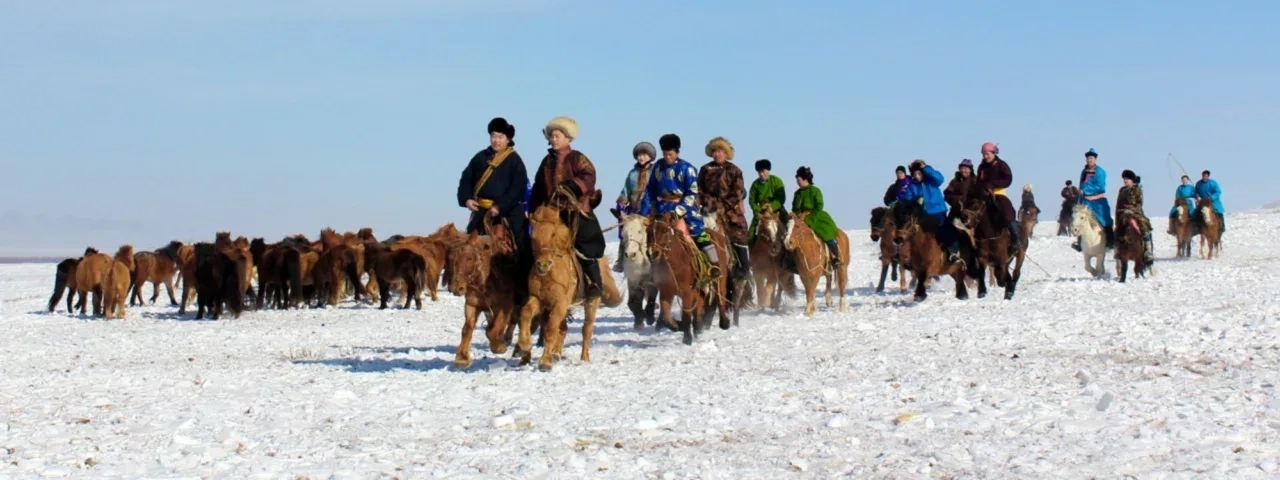Blog
How Mongolia celebrates Lunar New Year (Tsagaan Sar)
From late-January to mid-February, Mongolia celebrates its new year, Tsagaan Sar. It is the most joyous occasion for the country's nomadic herders as it marks the coming of spring after the long and harsh winter where hundreds of their animals can freeze to death. While Tsagaan Sar emphasizes family reunions like its Chinese counterpart, specific celebrations and rituals encompassing the holiday are unique.

Tsagaan Sar, meaning "White Moon", highlights a purity of intent or whiteness of spirit for the upcoming year. Mongols used to dress in all-white, ride a white horse, and eat only dairy products during the celebration. The holiday sees the largest annual human migration of Mongolia as hundreds of thousands of people take a journey back home, bringing the economy to a halt and causing a crazy traffic load. The preparation for Tsagaan Sar starts a month before the actual festival as families need to clean their homes, repair broken items, prepare feast food, and either buy or craft new traditional garments to wear on the big day. On New Year's Eve, families gather together at their parents or grandparents and feast until they are full so that they can live abundantly in the coming year.

On the first day of the year, everyone wakes up early in the morning and put on their new clothes. Men climb to the nearest hill to watch the first sunrise while women prepare milk tea to offer it to earth. After that, the family leaves home to visit their relatives, friends, and even neighbors. When a guest arrives, the host invites them in and greets them by offering snuff tobacco. The guests are then served with milk tea, dairy products, steamed meat dumplings known as buuz, and other delicacies. Upon their departure, the host must present gifts to the guests to thank them for paying a visit. This practice had become somewhat of a financial burden in recent years, as families strive to give guests lavish gifts to show how well they are doing. It is estimated that over 45% of the Mongolian elders take out a pension-backed loan to buy presents for guests, who can easily count to 100 people.

In 2020, the outbreak of COVID-19 in Wuhan had impacted scores of people hoping to catch up with families and friends on Lunar New Year. Like the rest of Asia, Mongolia has suspended the annual holiday and banned unapproved travel between provinces and the capital. This year, even harsher measures are being taken over concerns that large migration may spread the virus across the countryside. Despite the bad and good news, it is safe to say that Tsagaan Sar will make a comeback once the pandemic is over, as it is a holiday that had become part of Mongolia's national identity.
Nomadic Way | Homestay Tour
Spend three nights with a nomadic family, travel by beautiful lakes, thick pine forests, and visit the 17th century Baldan Bereeven Monastery, once home to some 8000 monks, and now slowly being brought to its former glory after it was destroyed during the purges of the 1930s.
View Tour